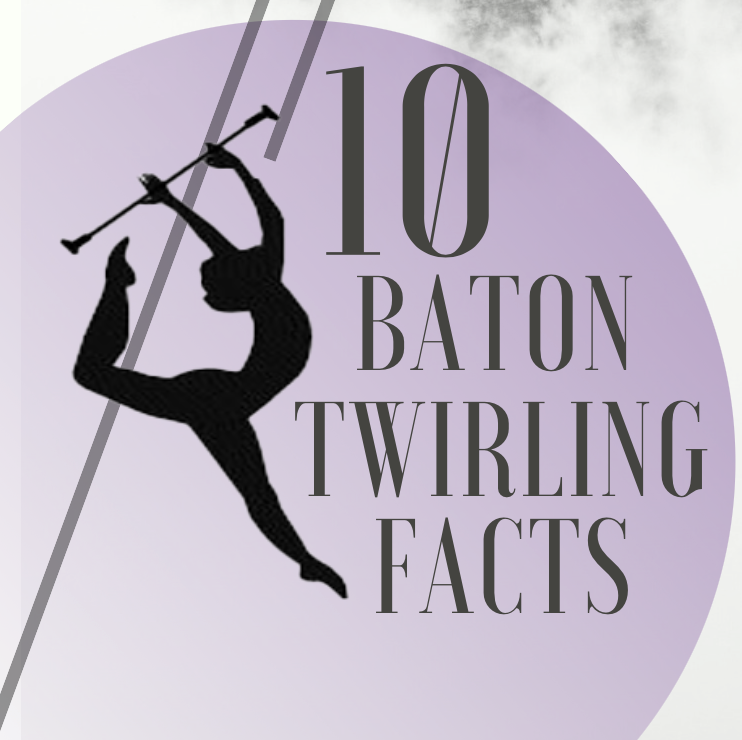Exploring Baton Twirling: Facts, Fun & Flexibility
“Baton Twirling: Where Grace Meets Strength!”

The Oxford Dictionary defines a sport as an activity involving physical exertion and skill, in which an individual or team competes against others for entertainment. Baton Twirling undoubtedly fits this definition, embodying a unique blend of strength, grace, endurance, and flexibility. What sets Baton Twirling apart is its exceptional suitability for younger athletes, motivating them to embrace physical activity, enhance dexterity, and nurture their passion for the sport. In this exploration, we unveil intriguing 10 Baton Twirling Facts, offer guidance for introducing newcomers to the discipline, and provide valuable tips for those twirlers eager to elevate their performance.

10 Amazing Facts About Baton Twirling
- Baton Twirling Began In France: Baton twirling is said to have originated in France in the late 19th century, inspired by military drills and became a popular form of entertainment.
- Baton Twirling Is A Sport: While most forms of dance, gymnastics, and rhythmic activity are rigorous enough to be considered a sport, not all qualify, but baton twirling absolutely does. Today, baton twirling is recognized and practiced as a sport in many countries around the world, with international competitions and organizations such as the World Baton Twirling Federation (WBTF) overseeing the sport’s development and growth.
- Men Twirl: While the sport is often associated with female performers, there are many male baton twirlers who excel in the sport and have won prestigious competitions.
- Batons Vary For Athlete: Competitive batons weight anywhere from 4 to 6 ounces allowing twirlers the preference to choose what works best for then, some advanced baton twirlers perform with fire batons, which are batons lit with flames, adding an extra level of excitement and danger to their routines.
- World Competitions: The World Baton Twirling Federation hosts prominent baton twirling competitions including championships and International Cup, each highlighting the exceptional talents of baton twirlers worldwide, Japan currently holds top world championship titles in numerous categories. The United States Twirling Association is a great resource for baton twirling competition opportunities, events, and the latest news. Collegiate-level baton twirling offers competitive opportunities
- Baton Twirlers Can Earn College Scholarships: Many colleges and universities in the United States offer scholarships to talented baton twirlers. These scholarships can cover tuition and other expenses. Marchingband.com, How to Become a Baton Twirler? has a great article that outlines becoming a baton twirler and helping those interested in performing at the collegiate level.
- Baton Twirlers Are Often Part Of The Band: Baton twirling is a common element in marching bands at the high school and collegiate level, adding visual appeal to halftime shows and parades.
- Batons Are Aluminum & Rubber: Modern batons are typically made of lightweight such aluminum for easier handling, to enhance performance and increase height. Most baton twirlers add colorful tape to their baton to help guide them in hitting intricate stunts.
- Baton Twirling Is Most Popular in the United States: Baton twirling holds the claim of being the most popular country for the sport, with Japan, Australia and the United Kingdom presenting a strong following.
- Baton Twirling Is Beneficial To Those Healing From Breast Cancer: Baton Twirling can be instrumental in aiding the healing process for those healing after breast cancer surgery. Twirling allows the arm to stay close to the body while working the muscles in a slow, rhythmic motion. Before beginning a regimen of twirling, check with your physician for approval, to verify the best baton weight and the duration of exercise. Here is a great article “Cancer survivors turn to baton twirling for fun, therapy and friendships by Natalie Walsh for The Daily Gazette.”
Baton twirling is a versatile and captivating sport with a rich history and a vibrant community of dedicated performers and enthusiasts.
Baton Twirling Starters
Young ones are often intrigued with the sport of baton twirling, twirling sticks, poles, or pencils, trying out the unique moves. For those who show a true interest in twirling, the journey often begins as young as 5 to 6 years old. Several key considerations come into play when determining the appropriate age to start this graceful and dynamic sport. While competitive baton twirling may not be in every child’s future, an introduction to the sport will help develop some amazing skills that will provide very useful.
Physical Development: When children as young as 5 to 6 begin twirling, they begin developing expanded motor skills, gain strength and improve dexterity. Young adults and adults new to the sport will find the same benefits. Youtube is a great resource for beginners to learn basic moves, practice skills, and beginner routines.
Focus and Readiness: Explore the world of baton twirling is a great way to encourage children to get up and move, baton twirling may capture their interest or simply open their minds to other forms of dance, movement sports, or a love for physical activity. You will soon know when the baton is always being twirled that there is a readiness for exposure to lessons, joining a team, or hiring a coach. The United States Twirling Association is a great place to explore what is is out there for new baton twirlers.
Coordination: Children between the ages 7 to 10, begin to show off their gift of coordination. While not all children take advantage of such skills, exploring a variety of sports and activities that allow children to advance their ability is always a good idea. Baton twirling, gymnastics and dance are all great avenues for both boys and girls.
Do It Right From The Beginning: Good coaches will tell you that retraining an athlete to perform skills the proper way takes time away from focus on improving skills. Exposure to proper twirling techniques from the start is always a good idea whether from youtube, classes, or the help of a coach.
Learning Team Work: While most children who participate in a sport do not go on to win a gold medal, become a professional athlete, or earn a scholarship, they have the opportunity to learn how to be a team player, respect authority, and have the opportunity to be part of something bigger than themselves. Giving children the opportunity to find a place they fit in starts young and being part of a great team has live-long benefits.
When it comes to picking an ideal age to begin baton twirling, you will know when the baton you put in a child’s hands and they seem to never put it down. A baton is a fantastic gift for gals or guys ages 5 to 10 for birthday, Christmas, or to say thank you. Browse our Baton Twirling Shop for complete selection of batons, books, and gear for those just starting or those who are all in on the sport.
